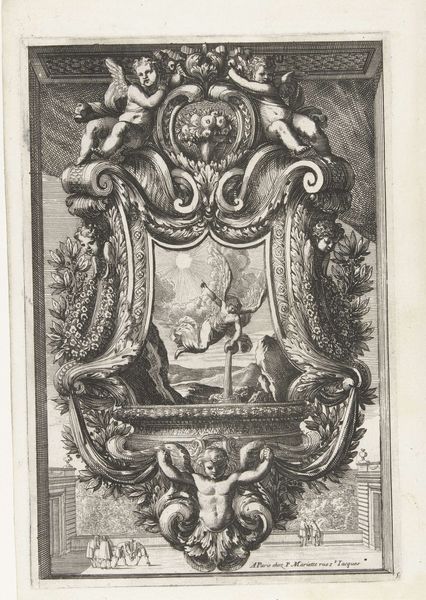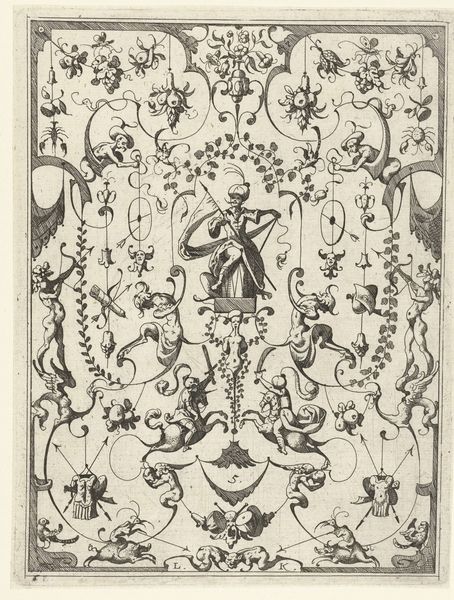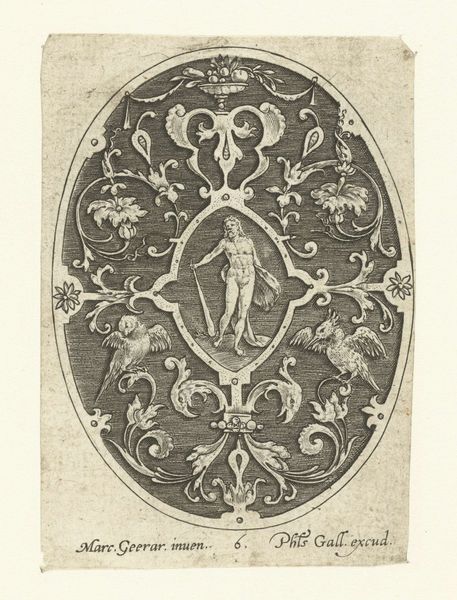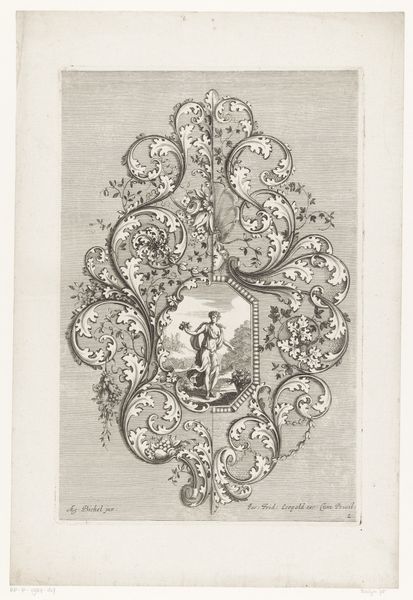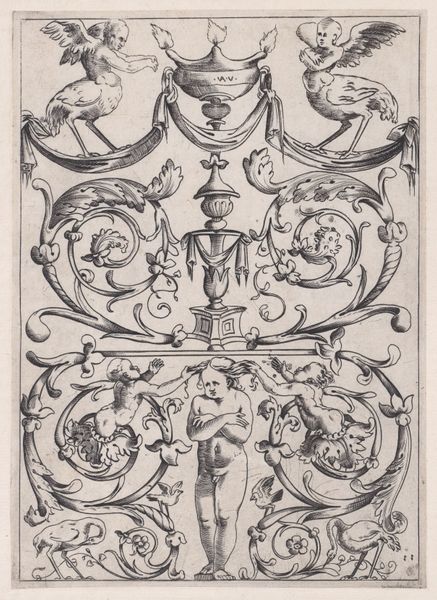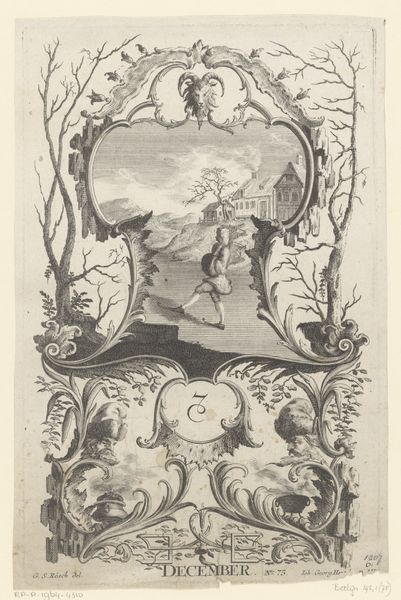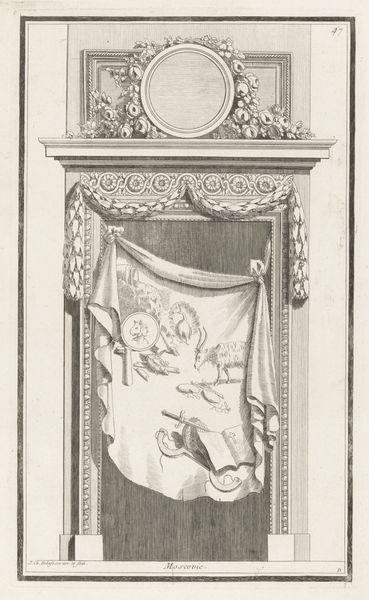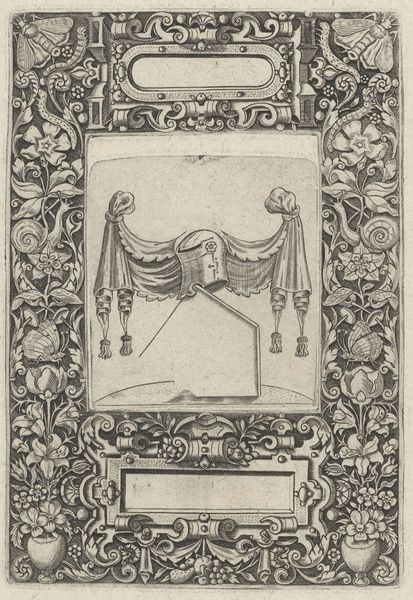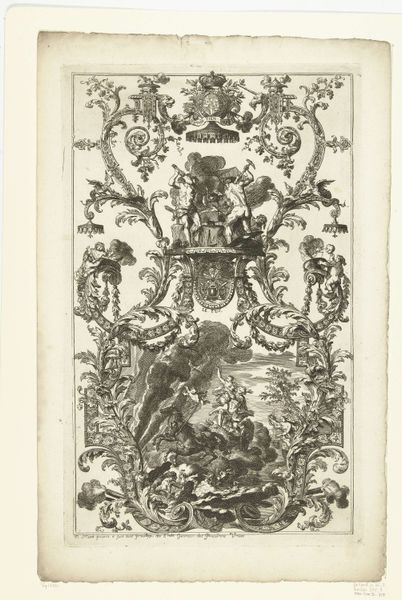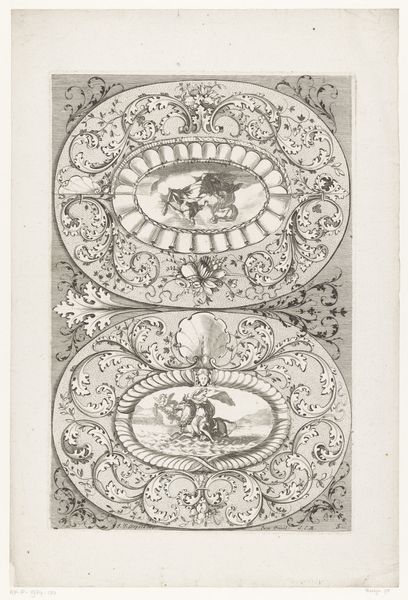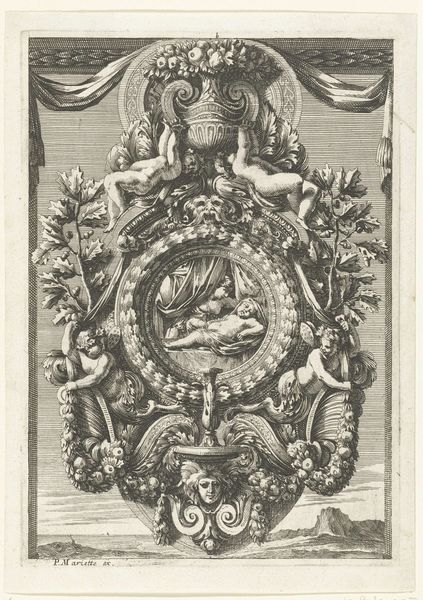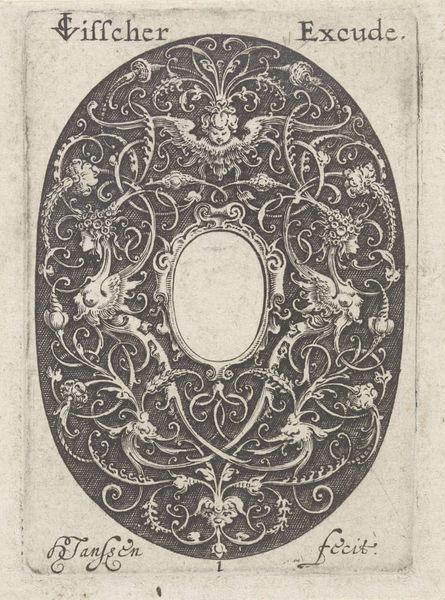
drawing, engraving
#
drawing
#
baroque
#
pen drawing
#
pen work
#
engraving
Dimensions: height 234 mm, width 159 mm
Copyright: Rijks Museum: Open Domain
Curator: This intricate pen drawing, titled "Twee halve panelen met cartouche," translating to "Two Half Panels with Cartouche," hails from between 1682 and 1734. The artist is Jean Lepautre. It is an engraving with dense baroque design. Editor: Wow, that's...busy! I mean that in the most appreciative way, of course. It feels very opulent, almost dizzying with the amount of detail. Like a hall of mirrors but with flourishes instead of reflections. Curator: Indeed. Observe the composition; two distinct panels presented side by side. One teeming with naturalistic forms – acanthus leaves, flowers, a winged mythical creature. The other displays more rigid, classical motifs – portrait bust, garlands, precise geometric patterns. The work creates a compelling duality in terms of symmetry. Editor: That griffin-esque creature on the left panel is just phenomenal, like a daydream escaped onto the page, half horse, half eagle—very commanding perched above what seems like an empty cartouche. What was its purpose? Some symbolic invitation? Curator: Precisely. Consider the function of these drawings, as engravings. These cartouches served as templates for decorative elements to be incorporated into larger architectural designs, allowing for personal insignia. Their incompleteness signals both creative agency and implied narrative potential. Editor: So, potential patrons could personalize it? Imagine choosing what goes inside to truly make it their own statement piece...I also get a kick from this sort of "organized chaos," how there are sections of the work fighting for attention against sections of almost soothing symmetry. What a way to declare a baroque party inside and outside of the walls. Curator: Your phrase "organized chaos" aptly describes this Baroque tension between exuberant dynamism and formal control. Editor: What an amazing piece. It has personality and order, a balance of forces ready to change the rooms around them, be them actual or simply planned on paper. Curator: A fitting reflection on Lepautre's dual vision. It offers a fascinating insight into the ornamental aesthetics and creative process of the late 17th and early 18th centuries.
Comments
No comments
Be the first to comment and join the conversation on the ultimate creative platform.

